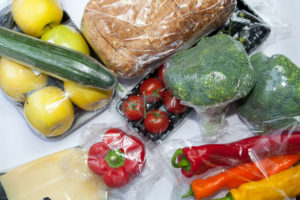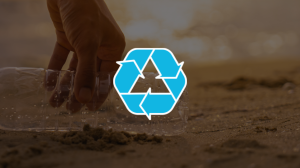There’s ‘Several Orders of Magnitude’ More Plastic in Rivers Than Oceans, Study Finds
Humans have produced an estimated 10 billion metric tons of plastic since the industrial era, most which has ended up as permanent waste in the environment that will define Homo sapiens’ legacy in the fossil record.
While the gigantic mass of plastic choking the Pacific is the most visible representation of the problem, ocean plastic accounts for just one tenth of a percent of the total plastic humankind has created since 1907, though the percentage has risen in recent years. Where the rest of the pervasive materials are settling and in what quantity is unknown—a plastic budgeting discrepancy of a magnitude that researchers are only just beginning to understand.
A new study presented at the American Geophysical Union (AGU) fall meeting in San Francisco last week has uncovered one of the final resting places of plastic that far exceeds total calculated global surface ocean plastic: the world’s rivers.
Researchers have viewed rivers as highways for plastic to enter the sea and not as significant places where plastic accumulates. But the preliminary results of a global effort to establish a baseline for plastic contamination indicates rivers are a massively underrepresented hotspot of plastic pollutants.
“We show in this study that the accumulation of plastic in river corridors is several orders of magnitude greater than the amount of plastics found in the world’s oceans,” reads the stunning abstract of the report, which is currently under peer review for publication in Nature Geoscience. “Our model-based quantification reveals that rivers do not solely function as pure conduits for plastics travelling to the oceans, but also represent long-term sinks, with in particular microplastics being buried in streambeds and floodplain sediments.”
The research is part of the 100 Plastic Rivers Project, which crowdsources river sampling from a global network of volunteers following a standardized collection procedure. The project, led by University of Birmingham researcher Stefan Krause, mails kits with detailed instructions for collecting sediment samples from specific rivers near streamflow gauges. Once they’re sent back to the lab, Krause’s team analyzes primary microplastics, such as microbeads used in cosmetics and microfibers from clothing as well as secondary microplastics, which are fragments of larger plastic items that have broken down over time. These tiny pieces of plastic measure less than five millimeters in size, and many are invisible to the naked eye. Microplastics and their smaller brethren known as nanoplastics make up the family of plastic pollutants finding permanent residence in the environment.
Read the full and original story at earther.gizmodo.com



